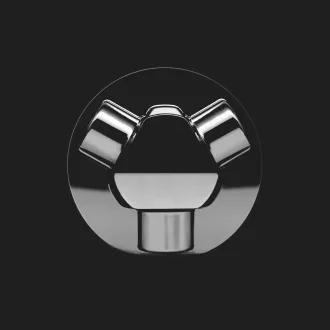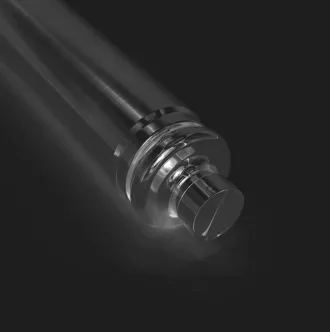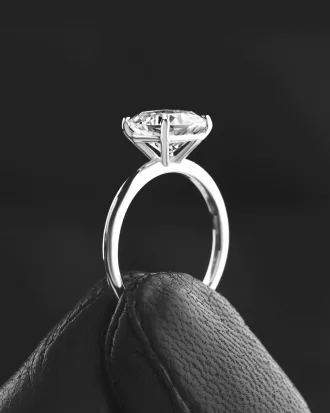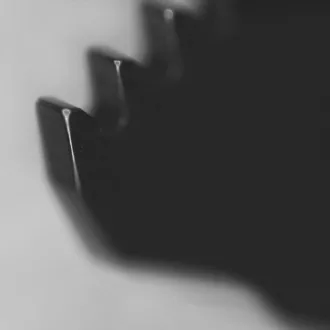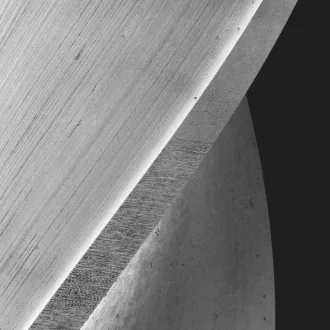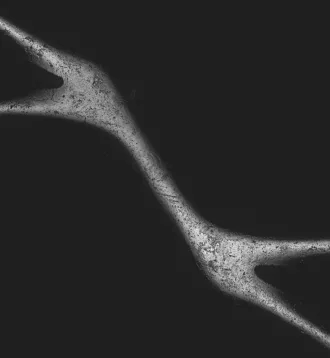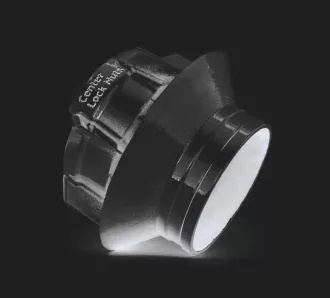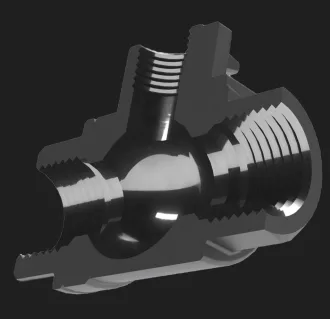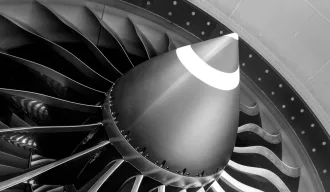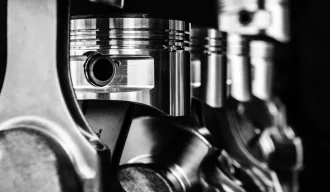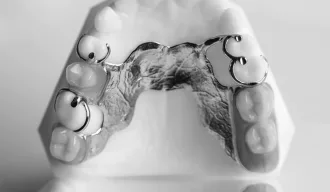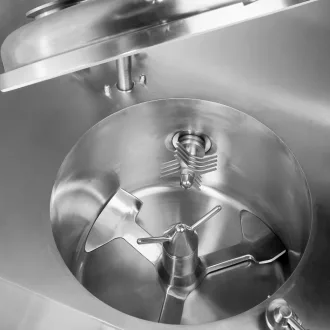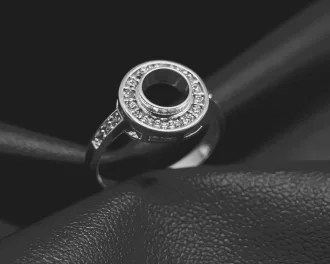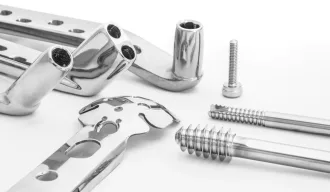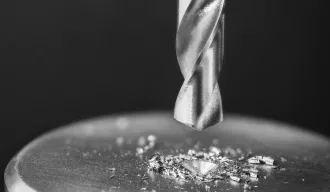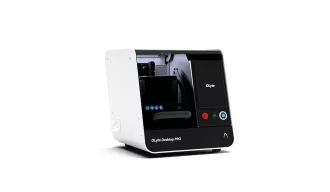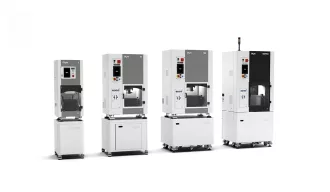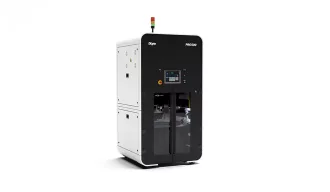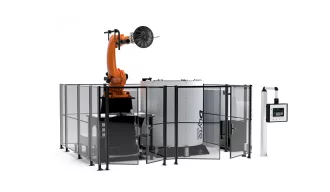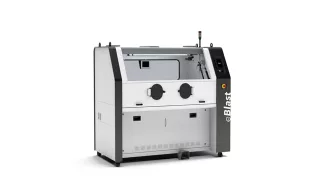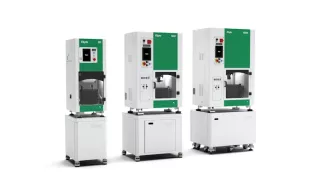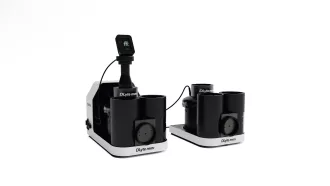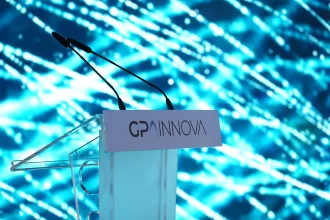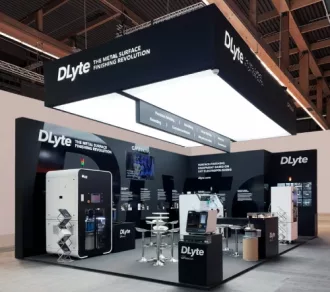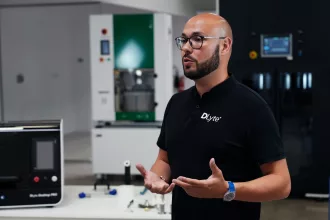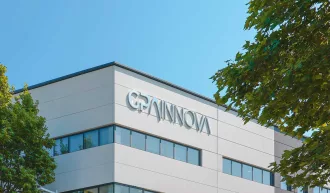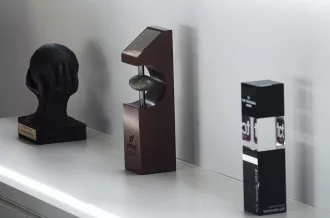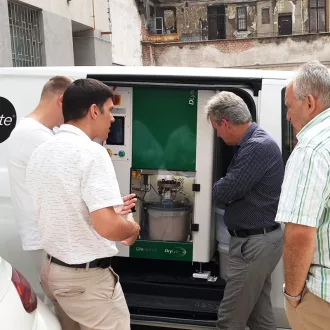Precision surface finishing

Superior surface finishing of precision components with tight tolerances improving mechanical properties, lifespan and corrosion resistance.

More and more demanding quality standards on the market are dramatically increasing the importance of precision surface finishing processes. The reason is clear, since there is no doubt that surface finishing treatments improve the aesthetic appearance of metal parts, but also their mechanical and physical characteristics, corrosion resistance and lifespan, among others. These treatments are often necessary when components are to be used in environments linked to significant stress or aggressive agents, or when products have particular handling needs.
It is a fact that today’s manufacturers demand extremely consistent and reliable processes from metal part producers. Besides this, according to current market demands, long-term durability of parts must be reproducible and performance must be guaranteed to stabilize the quality of precision components in a wide range of industries.
Some of the parts needing precision surface finishing processes are tools, transmission parts, turbines and fitting parts with functional applications.
Thanks to DLyte, it is possible to obtain high standard for surface flatness, smoothness and geometric precision in this kind of pieces. Due to its accuracy, low material removal and edge preservation it is specially well suited for parts that require superior surface finishing keeping completely the edges and tight tolerances that cannot be treated automatically otherwise. At its turn, dry electropolishing allows automated processes that guarantee consistent results among batches.


Technical benefits








Economic and environmental benefits





Precision Finishing Success Cases
Common applications





Smoothing

A smooth finish cuts down on friction loss, improving the bearing ratio, optimizing wear and tear and minimizing energy consumption and noise.

Smoothing Metal Surfaces with DLyte
Industrial parts usually require smooth surfaces to comply with their function. Metal work pieces need to be smoothed, not only in case of uneven caused by pre-treatment processes, but also to remove grind marks or scratches, or for levelling the surface of castings and forgings. In case of moving parts, like transmissions, turbines, valves, bearings, forming tools or spindles a smooth finish cuts down on friction loss.
DLyte Surface finishing selectively smooth metal surfaces to the desired surface quality on workpieces made from a wide variety of materials, such as, steel, stainless steel, aluminum or brass. Smoothing operations improve parts aesthetics and quality perception, optimize wear and tear, minimize energy consumption and noise.
Dry electropolishing processes achieve homogeneous results across the surface and eliminates micro-scratches and milling lines. The system works efficiently at micro and macroscopic level. It enhances negative surface skewness (rsk), increasing the surface bearing contact area —therefore, allowing uniform lubricant film distribution—, improving the bearing ratio and reducing the friction between metal parts and the noise.
In addition, dry electropolishing respects tolerances and preserves the initial shape of pieces, even the cutting edges, avoids generating grinding texture patterns. It offers high ratio of roughness reduction and protection against corrosion.


Technical benefits









Economic and environmental benefits





Common applications




Mirror finishing

Mirror finish is a highly-polished finish, characterized by a bright, shiny, reflective metal surface. Remove any micro-scratches and milling lines.

Mirror Finishing with DLyte
A mirror finish is a highly-polished finish, characterized by a bright, shiny, reflective metal surface. It can be found in aesthetic parts, such as architecture, transportation, consumer goods, or metal pieces aimed at fashion and luxury industry, but also in metal pieces produced for food, pharma and medical applications. A high-quality mirror finish is not only visually appealing, but the gradual removal of surface scratches through polishing processes reduces indentations or grooves on metal, which may contain contaminants, such as dirt or bacteria. Those surfaces are easy to clean, more corrosion resistant and allows detection of design flaws.
Besides a significant aesthetical improvement, mirror-finished pieces are much less susceptible to contamination than rough surfaces. Smooth surfaces are achieved by working with different grits in mechanical applications to gradually remove scratches and blemishes from the metal. For example, in more technical terms, mirror-finished steels have an Ra index between 0.15 (6 microinches) and 0.3 (12 microinches)- Ra. That is: concerning roughness average, which measures the microscopic peaks and troughs on the surface of the metal, the lower the number, the fewer or smaller the peaks and troughs, which means that polished metal surface looks smoother and more brilliant.
Dry electropolishing processes achieve homogeneous results across the surface and eliminates micro-scratches and milling lines. The system works efficiently at micro and macroscopic level. They also enhance negative surface skewness (rsk), increasing the surface bearing contact area —therefore, allowing uniform lubricant film distribution—, improving the bearing ratio and reducing the friction between metal parts. In addition, dry electropolishing respects tolerances and preserves the initial shape of pieces, even the cutting edges, avoids generating grinding texture patterns. It offers best-in-class surface roughness (Ra under 0.01 micrometers) and protection against corrosion.






Technical benefits










Economic and environmental benefits





Mirror Finishing Success Cases
Common applications















Deburring

Remove burrs from sharp or fragile parts that are not suitable for traditional finishing techniques without rounding edges or damaging the part.

Deburring with DLyte
Deburring is a material modification process that increases the final quality of the product by removing burrs left by previous machining processes. DLyte is an effective automated process to remove small burrs from complex or fragile metal parts that do not lend themselves to traditional tumbling or vibratory finishing techniques.
The dry electropolishing technology improves the result of current deburring technologies. It overcomes the barriers of liquid electropolishing and abrasive polishing using solid particles to remove material by ion exchange. As it is a non-abrasive treatment it does not round off the edges. The process is able to remove burrs, contamination of the surface and improve corrosion resistance and surface quality in just one process.
A burr could be defined as a sharp imperfection, rough edge or ridge left on an object by the action of a tool or machine. They are impurities with a negative impact the on the function or appearance of a smooth machined surface. Burrs are created from bending, cutting, piercing, shearing and compressing materials, and are mostly seen on ductile and soft materials. When bending or shearing forces are applied up to failure, metals and alloys may be hardened by plastic deformation. Areas along the edges become bent, extruded or elongated. These extrusions and elongations appear on the cutting edges, mainly on the entrance, sides, and exit of metal tools.
Burrs may affect the quality of manufactured metal pieces and render their surface unsmooth. What is more, the presence of burrs on the metal surface creates several problems. In fact, these imperfections prevent the fit and assembly of pieces, increase the risk of corrosion, fatigue and cracks and can trap contamination; have a bad impact on piece’s aesthetic effect, and may cause operator and end-user safety hazards. This is why deburring is essential in machining high demanding parts in food, pharma, medical or aerospace sectors.




Technical benefits









Dry electropolishing technology is a novel electrochemical process specially recommended to remove small burrs from parts. Since dry electropolishing is not a mechanical process, the metal hardness has no bearing on the burr removal. In addition, it is also suitable for annealed or hardened metal parts. Therefore, dry electropolishing can perform a final deburring after all the manufacturing processes.
On the other hand, dry electropolishing is not a distorting process. The main part of metal pieces manufactured nowadays have critical micro finishes or are made of more fragile, lighter materials. When it occurs, mass finishing techniques like tumbling or vibro-finishing generate warping or distortion, and can nick or scratch fine finishes. Dry electropolished pieces are not affected by stress from polishing media, nor are they tumbled onto each other.
Economic and environmental benefits





Rounding

Cutting edge geometry determines the thermo-mechanical stress suffered by the tool. Increase its lifespan with a controlled edge preparation.

Rounding cutting edges with DLyte
Rounding cutting edges, also known as cutting edge radius or edge preparation, is among the key parameters regarding the micro design and geometry of the cutting edges of a cutting tool in machining metals. Cutting edge geometry determines the thermo-mechanical stresses suffered by the tool and edge preparation can improve tool life, cutting performance and machined surface quality.
Several studies showed that the tool life of a cutting tool can be increased over 50% rounding the cutting edge to a specific micrometer value as hard materials are brittle and its sharp edges tend to flake and wear quickly. To recognize problems arising from an unprepared cutting edge, there will be a premature failure or machined part surface quality decrease. The end mill will have signs of chipping, material adhesion, coating peeling, and build-up edge.
DLyte is an effective automated process to round cutting edges of end mills, carbide inserts and carbide reamers to specific radius according to the manufacturer requirements and improve at the same time the surface quality of the flute thus allowing a faster chip flow and increased chip volume. The dry electropolishing technology improves the result of current rounding technologies. It overcomes the barriers of abrasive polishing using solid particles to remove material by ion exchange, even in very hard materials as carbide. As it is a non-abrasive treatment it maintains a good balance between smoothness of the flute and edge radius increasing tool life and resulting in less tool wear.
DLyte is able to process cutting tools after coating, thus smoothing tool surfaces and increasing the chip removal rate, tool life and quality of the machined surface.

Technical benefits







Dry electropolishing technology is a novel electrochemical process specially recommended to improve life of cutting tools through rounding of cutting edges and improvement of flute surface. Since dry electropolishing is not a mechanical process, the metal hardness has no bearing on the material removal rate. In addition, it is also suitable for annealed, hardened metal parts and other materials as carbides.
Economic and environmental benefits





Rounding success cases
Common applications




Corrosion resistance

Improve corrosion resistance, remove embedded free iron, contaminants and heat tint or oxide scale and reduce surface roughness in one step.

Dry Electropolishing for improved Corrosion Resistance
Corrosion resistance is the parameter that describes the deterioration of intrinsic properties of a metal due to a chemical reaction in the environment. This term is not only defined by the chemical composition of metals and alloys, but also by many other factors, such as fastener design, surface quality, stress concentrations and cracking. Environmental factors, such as chloride ion concentration, chemical composition of the corrosive environment, temperature, pH, pressure and oxidizing agents are also important in determining resistance.
Dry Electropolishing is an electrochemical finishing process that removes a thin layer of material from metal pieces, such as titanium, cobalt chrome, copper, aluminum or stainless steel, among others. This technology is the preferred method to enhance corrosion resistance and improve surface quality of metal parts. The technology leaves metal parts with 30x more corrosion resistance than passivation. Therefore, has replaced passivation as the favorite method to improve corrosion resistance. Additionally, is able to remove embedded free iron, contaminants and heat tint or oxide scale and reduce the roughness of the surface in one operation.
Passivation is a chemical metal finishing process to improve corrosion resistance of stainless-steel parts. For this kind of metal, the passivation process uses citric acid or nitric acid to eliminate ferrous contaminants like free iron from the surface. The chemical treatment leads to a protective oxide layer that is less likely to chemically react with air and cause corrosion. Passivation works by dipping the metal part to be treated in a bath of acid. This substance dissolves any free iron or other contaminants from the surface, thus cleaning the metal, and it re-oxidizes the chromium.


Why is dry electropolishing better than passivation to prevent corrosion?
As seen before, electropolishing and passivation are both methods that allow to increase corrosion resistance. Anyhow, the similarities end here. These are some of the main benefits of electropolishing processes over passivation:
- Dry Electropolishing improves corrosion resistance 30 times more effectively than passivation
- Dry Electropolishing brightens and polishes at the same time
- It is effective on all grades of stainless steel
- It is suitable for deburring
- It passivates metal parts at the same time that improves surface quality
- Dry Electropolishing is suitable for metal alloys which cannot be passivated as for instance titanium or nitinol
- It improves microfinishing and corrosion resistance
- It removes heat tint and oxide scale
- Unlike passivation, dry electropolishing does not require any pre-cleaning operation
Why is dry electropolishing better than liquid electropolishing to prevent corrosion and improve surfaces?
The corrosion resistance of a piece of equipment is dependent not only on the selection of the most suitable alloy, but also on the correct treatment of the material. Many applications require a surface treatment after smoothing, deburring or polishing to accomplish with corrosion resistance requirements.
Dry electropolishing is the only technology which is able to remove roughness drastically and improve the corrosion resistance of the metal pieces in one step, while reducing at the same time the number of processes required in the manufacturing process. In comparison, conventional electropolishing is able to reduce the roughness only a 50 % over initial roughness.

Economic and environmental benefits





Corrosion resistance success cases
Common applications




AM Post-processing

Automate surface finishing of additive parts without losing tolerances. Best balance between roughness reduction and geometry preservation.

Postprocessing Additive Manufacturing parts
Additive manufacturing (AM) is a production process whereby material is deposited layer by layer in a controlled way where it is needed. This technology allows the production of parts with new geometries and shapes which were not possible before.
Compared to traditional manufacturing techniques, it also reduces intermediate processes such as tooling production, making it possible to obtain parts faster and more cost effectively in short series, and prototyping and custom products.
Postprocessing AM parts supposes around 30 percent of the total cost and 50 percent of the total time of production of these pieces. The lack of automatic surface finishing procedures is a big barrier for the development of AM industry compared to traditional manufacturing.
DLyte performs automated effective surface finishing of metal additive manufacturing parts, thus improving dramatically the performance and lifespan of them. The patented technology based on dry electropolishing can improve drastically surfaces without changing the geometry.
The DLyte surface finishing selectively improves metal surfaces, leading to the desired surface quality on workpieces. The material range also includes very hard to erode materials as nickel alloys, titanium alloys, and cemented carbides.
DLyte’s DryLyte is considered the surface finishing technology for metal additive manufacturing parts, with the best balance between roughness reduction and geometry preservation. It also achieves the lowest surface roughness, which is at least two times lower than the next-best alternative on the market. It is also suitable to finish delicate and fragile pieces without harming them, as the process does not use abrasive nor strong mechanical forces.
In comparison with abrasive, those methods do not stress the surface, do not cause scratches over smooth surfaces, and do not produce inclusions on the metal surface, as abrasive does. Another advantage of those processes versus abrasive is that they do not create dust remnants or noise.
The DryLyte Technology has been awarded the TCT Award for Excellence in Additive Manufacturing Post-Processing in 2018 and 2022.
Benefits of a proper finishing in AM metal parts
The AM parts need to be accurately finished. There are some reasons that prove the importance of surface finishing.
Surface finishing makes it possible to selectively achieve the desired surface quality on workpieces made from a wide variety of materials, such as, steel, stainless steel, aluminum, or brass. Since the process is equivalent to deburring, burrs are removed from inaccessible or difficult-to-access locations on a piece, while its edges are also deburred and rounded off.
The quality of the surface finishing will be essentially determined by the type and setting of the machine, as well as the material of the parts.
It is quite common to carry out this process with abrasive substances, whose use may generate rougher surfaces than less abrasive ones. Nonetheless, the roughness pattern can also be controlled by selecting specific geometries of the abrasive bodies, but also by using less aggressive processes, like DLyte’s solutions for electropolishing.
If you have any query or doubt about surface finishing in AM metal parts, do not hesitate to contact our team of experts.

Technical benefits









Economic and environmental benefits





Common applications






Inner channels polishing

Improve surface quality of inner channels and complex metal parts with blind holes cost-effectively, reliable and with superior quality.

Inner channels polishing with DLyte
Surface quality requirements of internal surfaces, inner channels and complex parts with blind holes have increased during the last years specially in case of injection molding, aerospace, automotive, medical, food and pharma, semiconductors and gas and fluid flow applications. In addition, new manufacturing methods as additive manufacturing with its ability to create complex parts but poor surface quality has increased the need for internal areas surface finishing.
Most of the applications requiring internal polishing requires low roughness and absence of burrs to increase velocity of the flow and reduce turbulences due to lower friction, an inert, smooth surface with few sites for trapping impurities and avoiding bio-film formation and resistance to corrosion as the parts are exposed to oxidizing agents. Current surface finishing technologies as abrasive mechanical, chemical and manual finishing are not able to treat effectively those cases thus achieving suboptimal results.
DLyte performs cost-effective, reliable, superior quality and inert internal surface finishing of metal parts using the novel Dry Suspension electropolishing process. It encompasses the benefits of mechanical and electro-chemical processes in one single process since DLyte improves the results of alternatives procedures for treatment of inner channels as abrasive flow machining and liquid electropolishing.
The solution is able to deliver surfaces with an average roughness Ra below 0,3 microns and improving the corrosion resistance versus raw and liquid electropolished surfaces thus achieving the targets of ultrahigh-purity and high-purity components. Straight channels or right and obtuse angles with a minimum diameter of 4 mm can be internally polished.
Technical benefits










Economic and environmental benefits





Inner channels polishing Success Cases
Common applications



